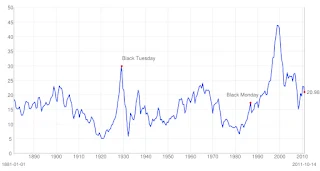The Case Shiller National Home Price Index hit 212 in October 2019, 51% above 140. The full data at the new iteration of the index since February 2018 is behind a registration wall.
The 140 level was the level around which the index tracked for most of the post-war until the year 2000, in a range between 120 and 160.
Since then it's been as high as 235 in 2005 and 2006 during the housing bubble, and as low as 151 in February 2012 after the bubble sort-of popped. A real correction might have taken prices to 120 or even below.
Clearly the index never returned to the post-war experience, which was mostly slightly below 140. Keeping housing prices high became a Federal Reserve objective and bragging point after the Great Financial Crisis of 2008, achieved by manipulating interest rates lower.
The median sales price of an existing home in the US is currently $271,300 through November 2019, a price which is traditionally considered affordable to any individual making $104,346 per year and up. [The proprietary data has been removed from FRED and currently starts only from April 2024. Use MSPUS instead].
Seeing that's just 8.5% of individual wage earners in 2018, the median sales price of an existing home is currently UNAFFORDABLE to 91.5% of wage earners.
Most people have to put together two incomes to afford such a house. But in a country where the median wage is south of $33,000 per year in 2018, two incomes only gets you to $66,000, which affordably buys you a house worth about $171,600 or so, $100,000 less than the current median sales price.
In my immediate vicinity, there's exactly two such single family homes on the market right now which are affordable to a couple making $66,000. Everything else costs much, much more.
This is a picture of declining equal opportunity.

















